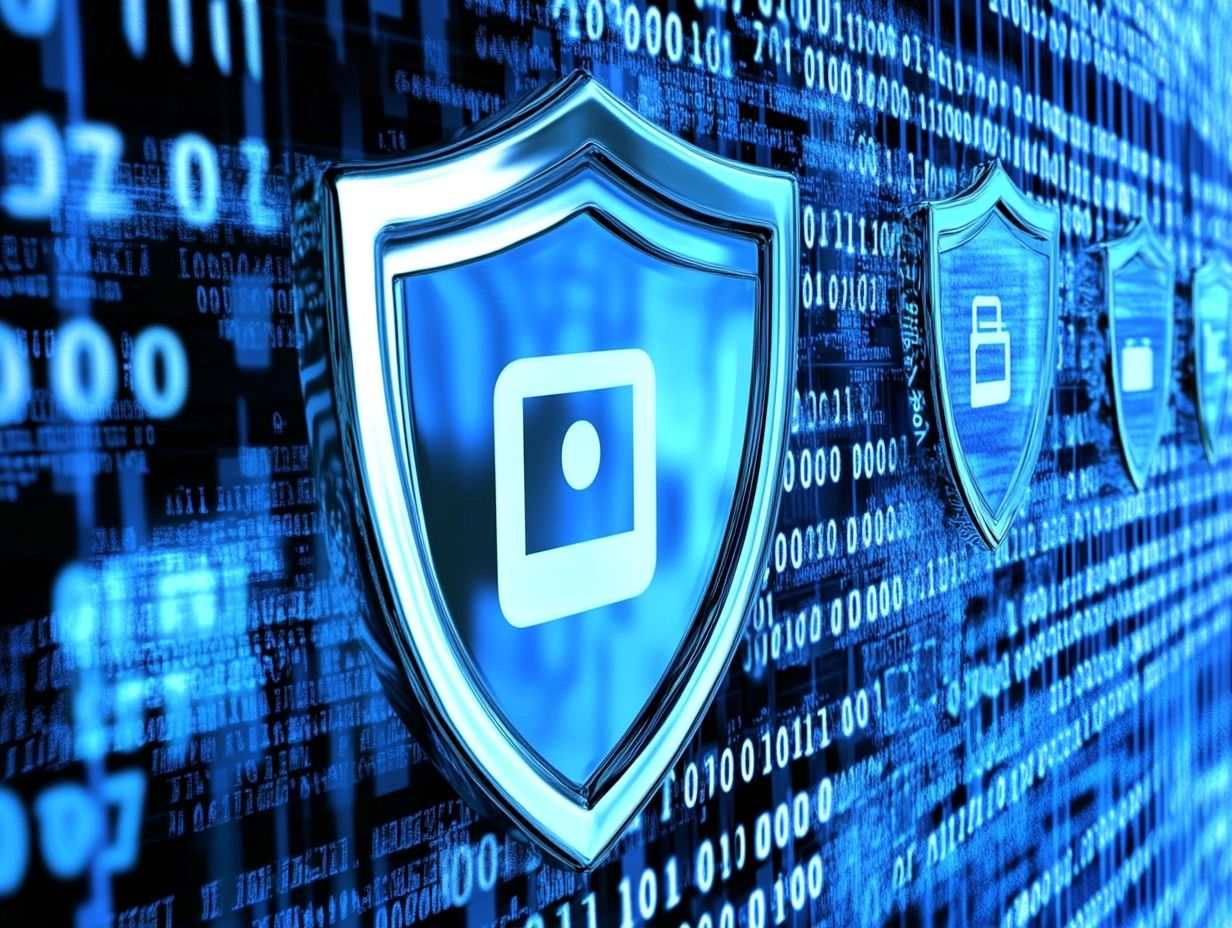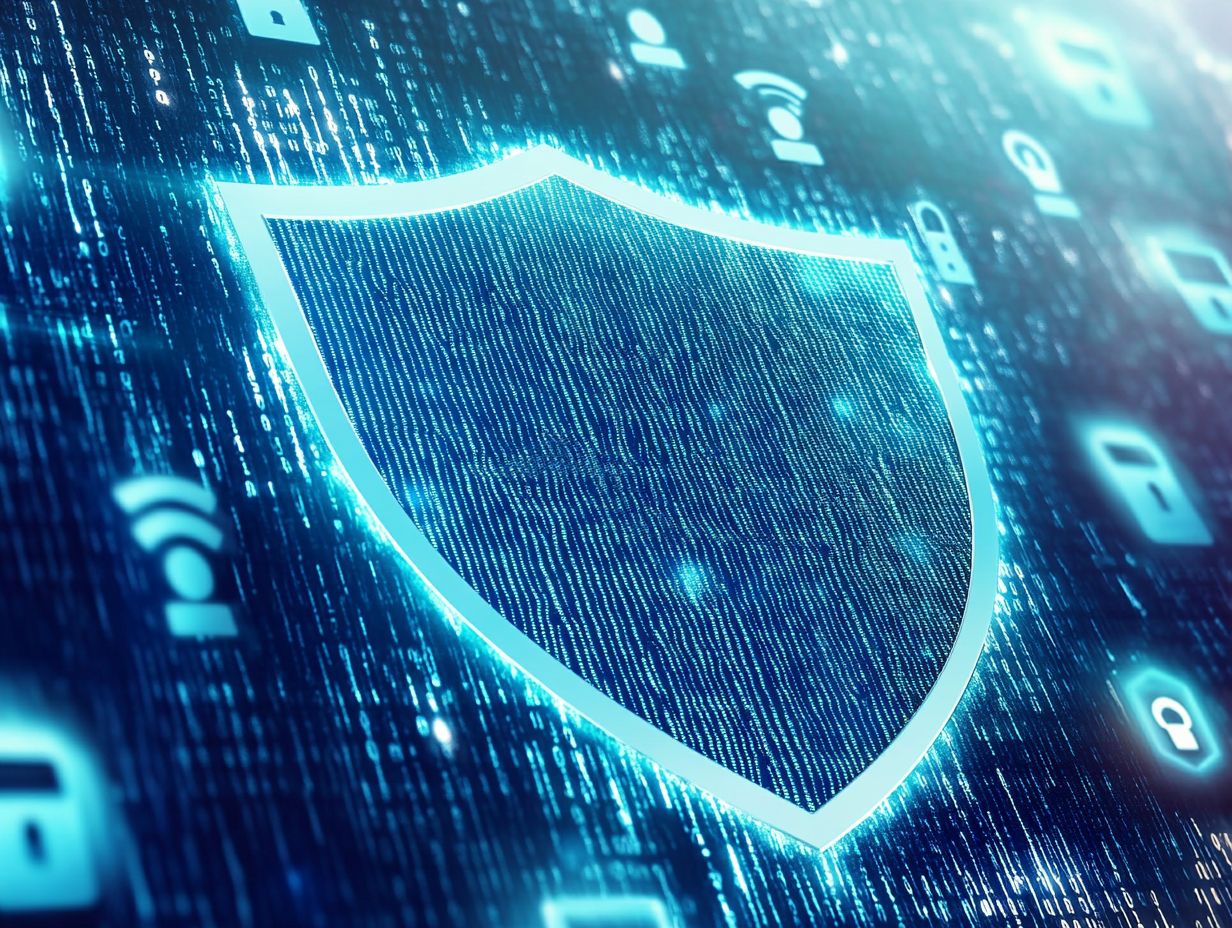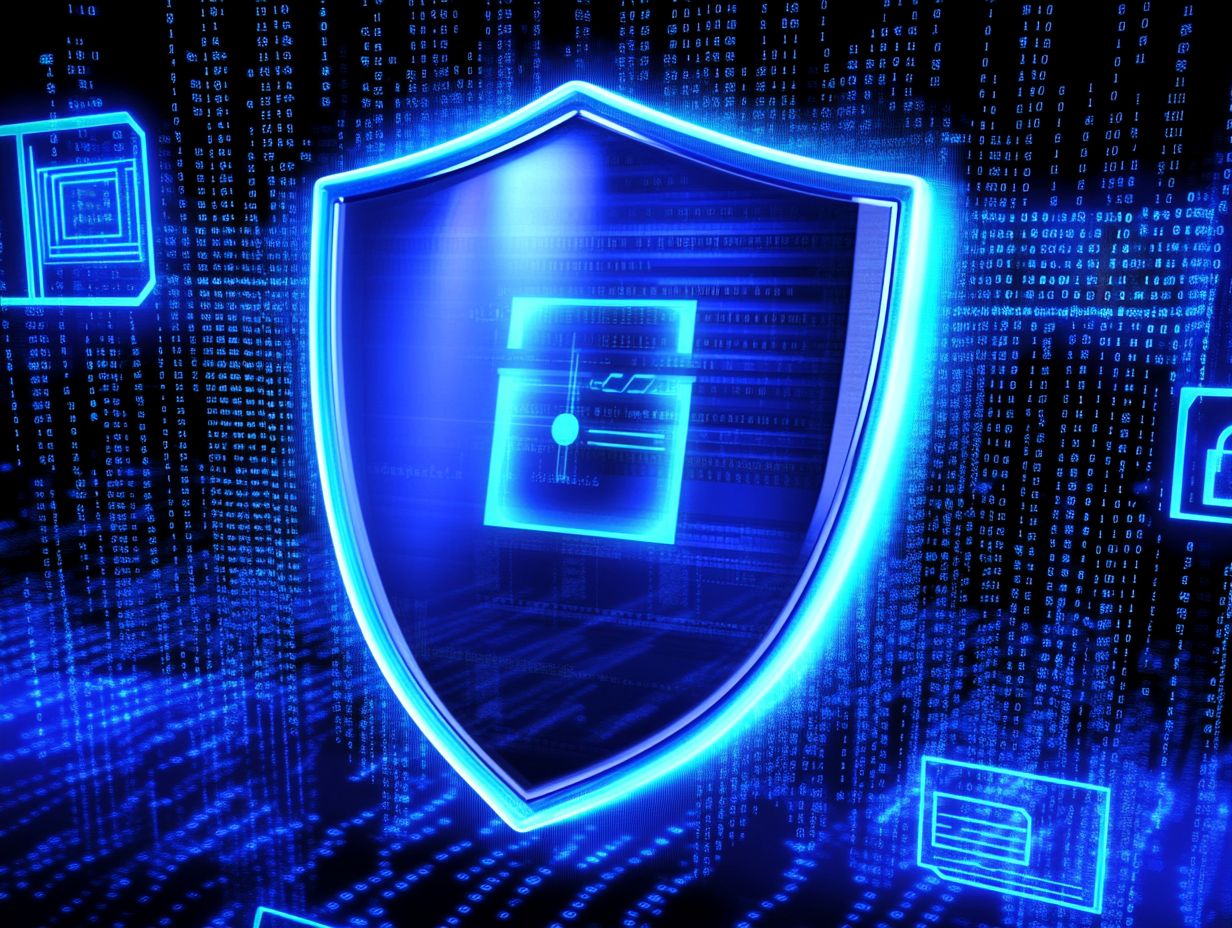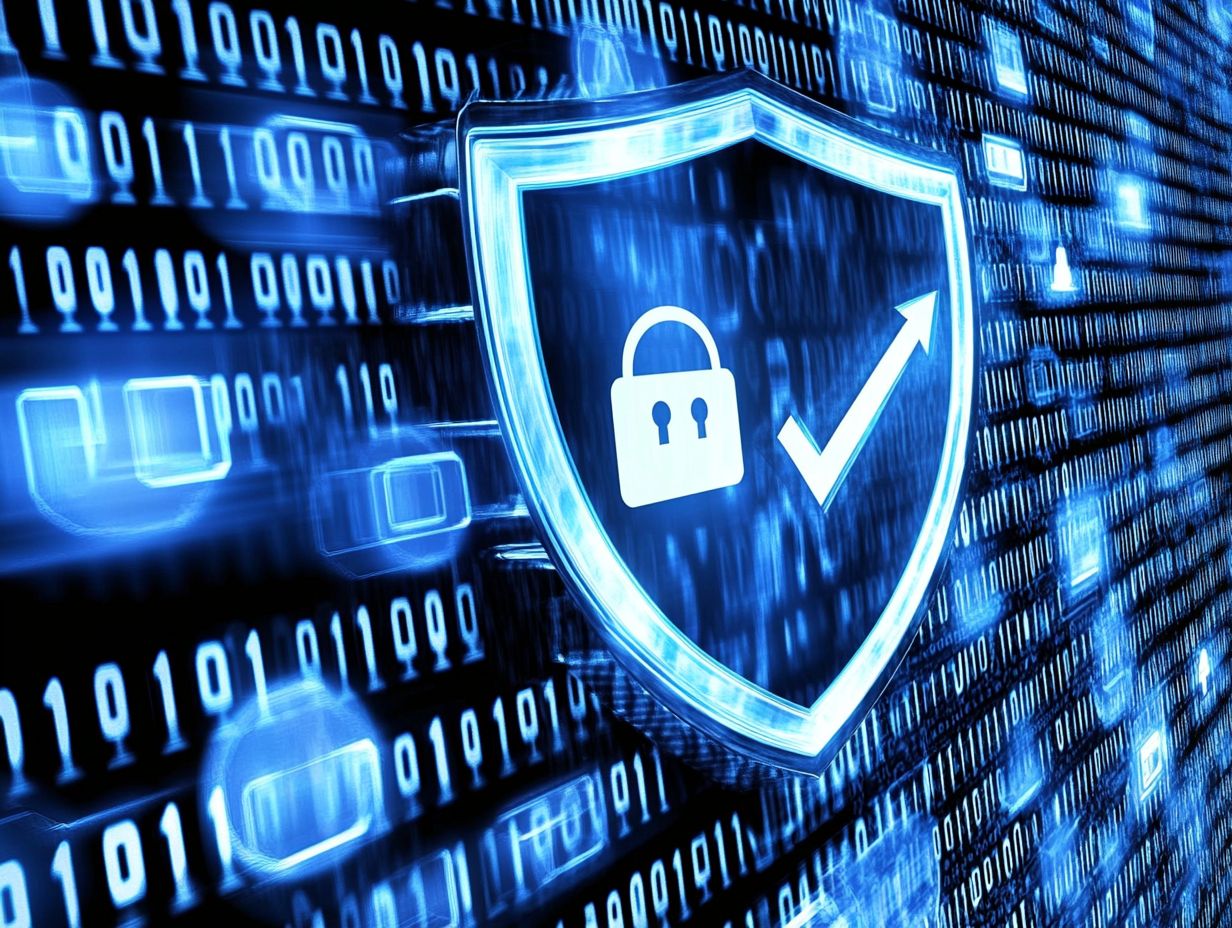In today’s digital landscape, safeguarding sensitive information and ensuring robust IT security and network security is crucial for any business, especially against cyber attacks and malware protection.
Firewalls and antivirus software serve as fundamental defenses against cyber threats, designed to protect your systems from potential attacks, including ransomware and phishing attacks.
This article delves into the critical roles these tools play in IT security and cybersecurity, highlighting their functionalities and key differences in malware protection and network security.
Discover how firewalls and antivirus software can collaborate to establish a strong defense, addressing threat detection and system vulnerabilities, the potential risks of foregoing these protections, and practical tips for selecting the right solutions for your business, including cloud security and data encryption.
Continue reading to make sure your cybersecurity strategy is comprehensive and effective, incorporating robust cyber hygiene and security protocols.
What are firewalls and antivirus software, and how do they work?
Firewalls and antivirus software are key elements of IT security, acting as the first defense against cyber threats and digital threats. Firewalls manage and control network traffic, creating a barrier between trusted internal networks and external networks, and ensuring endpoint protection.
Antivirus software detects, prevents, and removes harmful software like viruses, Trojans, and ransomware, ensuring user safety. Together, these tools offer a strong cybersecurity approach, protecting systems from various threats, including identity theft and botnets.
Firewalls come in hardware and software types, each designed for specific settings. Hardware firewalls act as a physical barrier at the network’s edge, while software firewalls run on individual computers, providing customized network traffic control. Both use firewall rules to determine allowed actions and include intrusion detection systems (IDS) to alert users of potential threats, enhancing network traffic analysis.
Antivirus tools use methods like heuristic analysis, signature-based detection, and behavior monitoring to identify security risks in real-time. By combining these features, organizations can strengthen their defenses and maintain strong cybersecurity, with robust malware remediation capabilities.
Why are firewalls crucial for IT security?
Firewalls are essential in IT security, serving as gatekeepers for network traffic to block unauthorized access and prevent security breaches. By enforcing security rules and monitoring traffic, firewalls ensure only authorized users and data can enter or leave the network. This protection is crucial in an era of increasing and complex cyber threats.
Different firewalls, such as packet-filtering, stateful inspection, and next-generation firewalls, offer various protection levels by applying specific security rules and firewall types to check data movement.
For example, packet-filtering firewalls might use access control lists to restrict traffic based on IP addresses, while next-generation firewalls can include intrusion prevention systems to detect and stop advanced threats in real-time.
The importance of these measures is highlighted by data breaches where ineffective firewalls have allowed unauthorized access to sensitive information. The 2014 Sony Pictures hack, which exposed a large amount of confidential data, and the Equifax breach in 2017, which exposed sensitive information of about 147 million people, are examples of breaches that stronger firewall measures and robust security policies could have potentially prevented.
How does antivirus software protect against malware and threats?
Antivirus software is crucial for defending against malware and other cyber threats, providing an essential layer of protection for systems and devices. With advanced malware detection techniques, these programs can scan files for known threats and identify suspicious behaviors that may signal new, unknown malware. This proactive method helps maintain digital safety by continually monitoring for security incidents and vulnerabilities.
Antivirus programs address threats like viruses, which can replicate and spread to other files and systems, and Trojans, which often disguise themselves as legitimate software to trick users. Ransomware is a particularly harmful type of malware that encrypts data and demands payment for its release, highlighting the importance of strong antivirus solutions.
To tackle these varied threats effectively, antivirus software regularly updates its threat database with the latest information on emerging risks. This, combined with real-time protection and frequent software updates, enables users to quickly respond to new malware variants, significantly boosting cybersecurity.
What are the key differences between firewalls and antivirus software?
Understanding the differences between firewalls and antivirus software is important for IT security. Firewalls manage network traffic, controlling what comes in and out, while antivirus software targets the detection and removal of malware from systems. Both are crucial in managing intrusion prevention and maintaining system integrity.
Although they serve different purposes, both work together to strengthen defense against cyber threats and improve network security and overall internet security.
Firewalls use packet filtering to examine data packets as they pass through the network. This process helps block unauthorized access and potential intrusions by permitting only trusted traffic. They also enhance network segmentation and secure network design.
In contrast, antivirus software uses heuristic scanning to find and neutralize malicious software based on behavior and patterns, not just known signatures. This method allows it to detect new threats that might bypass traditional security measures.
Together, these technologies protect different areas of vulnerability, ensuring both the network perimeter and endpoint systems are secure against various digital attacks.
How can firewalls and antivirus software complement each other in IT security?
Firewalls and antivirus software work well together in an IT security strategy, enhancing protection against various cyber threats. Firewalls control network traffic and block unauthorized access, while antivirus software protects against malware that might bypass the firewall. This combined approach strengthens security measures to protect sensitive data and systems.
By integrating these tools, a defense mechanism is created to address both external and internal risks. A firewall serves as the first defense line by checking incoming and outgoing data, and antivirus software continuously monitors for malicious activity or software within the network.
This partnership not only reduces vulnerabilities but also improves the response to potential threats for quicker solutions. By adopting a comprehensive approach that emphasizes the interaction of different security tools and practices, organizations can build a more resilient cybersecurity framework.
Strengthening their security posture protects against evolving cyber threats and supports compliance and trust.
What are the potential risks of not using firewalls and antivirus software?
Neglecting to use firewalls and antivirus software can lead to security breaches, data loss, and various cyber threats. Without these tools, networks are vulnerable to malware attacks like ransomware and phishing, which can result in data compromise and identity theft. Regular behavioral analysis and adherence to security policies can mitigate these risks.
Effective risk management strategies are crucial to address these vulnerabilities, making robust security solutions essential. Implementing thorough security assessments and vulnerability assessments can further enhance protection.
Recent high-profile breaches, such as the Equifax breach in 2017, exposed sensitive information of about 147 million people due to undiscovered software vulnerabilities. The WannaCry ransomware attack disrupted hundreds of thousands of computers worldwide, showing how quickly systems can be compromised without protection.
These incidents highlight the importance of prioritizing data protection and adopting comprehensive cybersecurity practices, including adherence to security standards and compliance requirements.
Implementing firewalls and antivirus software helps businesses safeguard their assets and build trust with clients and stakeholders, ensuring continuity and resilience in a dangerous digital environment. Regular security incidents response planning is crucial for maintaining a robust defense.
How to choose the right firewall and antivirus solutions for your business?
Choosing the right firewall and antivirus for your business is crucial for your IT security. You need to assess your specific needs, considering factors like network size, type of data handled, and potential security threats. By thoroughly evaluating options and conducting security assessments, including security audits and security breach response, you can select the best software to defend against cyber threats and ensure data privacy.
Key features such as real-time protection and intrusion detection are essential for detecting and neutralizing malware before any damage occurs.
Effective malware detection can protect sensitive information while minimizing false alarms. User-friendly management interfaces can simplify security oversight.
As your business grows, it’s important to choose scalable solutions that can meet increased demands. Ensuring compatibility with existing security systems, including security frameworks, is also key for seamless integration and enhanced overall defense.
What are the common features to look for in firewall and antivirus software?
When evaluating firewall and antivirus software, it’s important to identify features that improve security. Key functions include real-time protection, malware detection, network monitoring, and strong reporting capabilities. Features like web filtering and application security also greatly enhance overall protection.
These features help identify and neutralize threats while ensuring continuous monitoring of network integrity and data protection.
Intrusion detection systems are crucial as they alert users to suspicious activities or breaches in real-time. Detailed security logs are valuable for auditing and identifying unauthorized access patterns, allowing users to respond quickly to potential threats. Regular security patches and patch management further enhance protection.
User authentication methods, like two-factor authentication, enhance security by verifying user identities before granting access. Techniques like secure coding practices and sandboxing can further enhance security. However, even the best tools can be ineffective if users are not properly trained.
It’s crucial to emphasize user education and security awareness training to support these tools and cultivate a culture of security that maximizes their effectiveness, ensuring a strong defense against zero-day exploits and enhancing overall security compliance.
How often should you update your firewall and antivirus software?
Regularly updating your firewall and antivirus software is essential for strong IT security and protection against new cyber threats. These software updates help these tools effectively detect and stop the latest malware and system vulnerabilities, enhancing overall network security and malware protection.
Taking a proactive approach by scheduling routine software updates reduces the risk of security incidents, such as data breaches and phishing attacks, and improves risk management.
Outdated software can make systems vulnerable to digital threats, as cybercriminals continuously change their tactics, including deploying trojans and ransomware. Organizations should set a schedule for updates, ideally at least once a month, or more often based on threat assessments and threat intelligence.
Using automated patch management can simplify this process and ensure important security patches and updates are not missed. Regularly checking security settings and configurations, including firewall rules and intrusion prevention systems, is also crucial for keeping these solutions effective in a constantly changing digital environment.
What are the best practices for configuring firewalls and antivirus software?
Setting up firewalls and antivirus software according to security best practices is vital for protecting against cyber threats. Proper configurations, including firewall rules and antivirus settings, prevent unauthorized access and detect malware effectively.
|||
Setting up firewalls and antivirus software according to security best practices is vital for protecting against cyber threats. Proper configurations, including firewall rules, antivirus settings, and endpoint protection measures, prevent unauthorized access and detect malware effectively.
Setting up firewalls and antivirus software according to security best practices is vital for protecting against cyber threats. Proper configurations, including firewall rules and antivirus settings, prevent unauthorized access and detect malware effectively.
Following established security standards and protocols significantly enhances network security and protects sensitive data, reducing the risk of cyber attacks and identity theft.
Implement user authentication measures to ensure only authorized personnel can access sensitive areas, and establish robust access control policies to limit permissions based on user roles, strengthening overall security. Additionally, employing secure connections and encryption techniques like SSL/TLS can further protect data integrity.
Conduct regular security audits and vulnerability assessments to identify potential system vulnerabilities and adjust security configurations proactively. Because cyber threats continually evolve, organizations must stay informed about the latest risks and adapt their security measures accordingly, including implementing behavioral analysis and threat detection techniques.
Understanding these practices fosters a stronger security posture and enhances overall cybersecurity resilience. Regular security awareness training can also help maintain high standards of cyber hygiene among employees.




